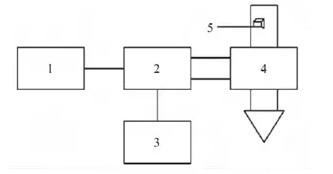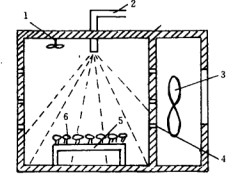
- Shandong Microwave Machinery Co.,Ltd.
- To be the Leader of microwave drying and edible oil refining equipments Manufacturer
Home> Company News> Study on microwave drying characteristics of fungus
- AddressNo. 225, Huangqiao Village, Beiyuan, Tianqiao District, Jinan, Shandong, China
- Factory AddressNo. 225, Huangqiao Village, Beiyuan, Tianqiao District, Jinan, Shandong, China
- Phone(Working Time)+86 0531 85064681
- Phone(Nonworking Time)0086-15020017267
- Fax+ 86 0531 85064682
Study on microwave drying characteristics of fungus
2018-11-27 16:04:57Summary :
[Objective] The drying characteristics of fungus under different microwave powers were studied.
[Method] The effect of microwave power on the microwave drying characteristics of fungus was analyzed from the relationship of water content and drying rate, and the water loss law of microwave drying process in fungus was obtained.
[Results] The experiment showed that the higher the microwave power, the faster the drying speed of the fungus; under the same microwave power, the initial drying speed was slower; the medium-term accelerated drying, and the later stage appeared constant speed or slowdown.

The higher the microwave power, the higher the temperature of the dried material, and the faster the temperature rises during the same drying time; when it reaches about 70 °C, the protective film on the surface of the fungus is destroyed, and the protection of moisture in the fungus is lost, and the temperature rises again. trend. According to the analysis, the microwave drying speed is affected by the internal energy conversion process of the drying field and also depends on the internal structure of the material.
[Conclusion] The research can provide reference for the process optimization of the microwave drying equipment and the design of new drying equipment.
Key words : fungus microwave drying; characteristics
Auricularia auricular (L. ex Hook.) Under, belonging to the Basidiomycetes fungus, fungus family, has a variety of physiological activities, is the world's first artificially cultivated high-quality basal basidiomycetes. Because the fresh fungus has a high water content and is difficult to store and transport, the traditional fungus is directly marketed as a dry product.
Traditional drying methods for fungus use natural drying and hot air drying. Traditional fungus drying has the disadvantages of low heat utilization rate, low production efficiency and excessive energy consumption. At present, there are few reports on the drying of fungus at home and abroad, so it is especially important to study the drying method and drying characteristics.
Microwave is a high-frequency electromagnetic wave with strong penetrating power, which promotes the diffusion of moisture to the surface of the material during the drying process, thereby accelerating the drying speed.
Compared with the traditional drying method, microwave drying not only has high heat utilization rate, short heating time, high production efficiency, energy saving, production cost saving, but also uniform drying, clean production, improved food quality after drying, and easy drying process. Control, technically reliable and feasible.
The author carried out experimental research on the microwave drying characteristics of fungus, selected microwave power as the influencing factor, carried out the drying test on microwave equipment, analyzed the microwave drying characteristics of fungus, provided reference for the optimization of microwave drying process and the design of new drying equipment.
In the microwave drying process of the fungus, the higher the microwave power, the faster the drying speed; under the same microwave power, the initial drying speed is slower, the medium-term accelerated drying, and the later stage of constant speed or slowdown. The higher the microwave power, the higher the temperature of the dried material, and the faster the temperature rises during the same drying time; when it reaches about 70 °C, the protective film on the surface of the fungus is destroyed, and the protection of moisture in the fungus is lost, and the temperature rises again. trend.
The reason is analyzed: the microwave drying speed is affected by the internal energy conversion process of the drying field, and also depends on the internal structure of the material. Increasing the microwave power increases the drying rate. By analyzing the microwave drying characteristics of fungus, it provides a theoretical basis for the optimization of microwave drying process and the design of new drying equipment.
 High efficiency food beverage factory stone paper production line
High efficiency food beverage factory stone paper production line Factory price Fully automatic Machine PP/PS Plastic Sheet Production Line
Factory price Fully automatic Machine PP/PS Plastic Sheet Production Line used deformered bar rolling mill production line
used deformered bar rolling mill production line Manufacturing plant automatic factory puffed sticky rice cracker production line
Manufacturing plant automatic factory puffed sticky rice cracker production line Production Line Pp Ppr Plastic Pipe Making Machine 20-63mm Multi-layer Extrusion Production Line For Water Supply
Production Line Pp Ppr Plastic Pipe Making Machine 20-63mm Multi-layer Extrusion Production Line For Water Supply